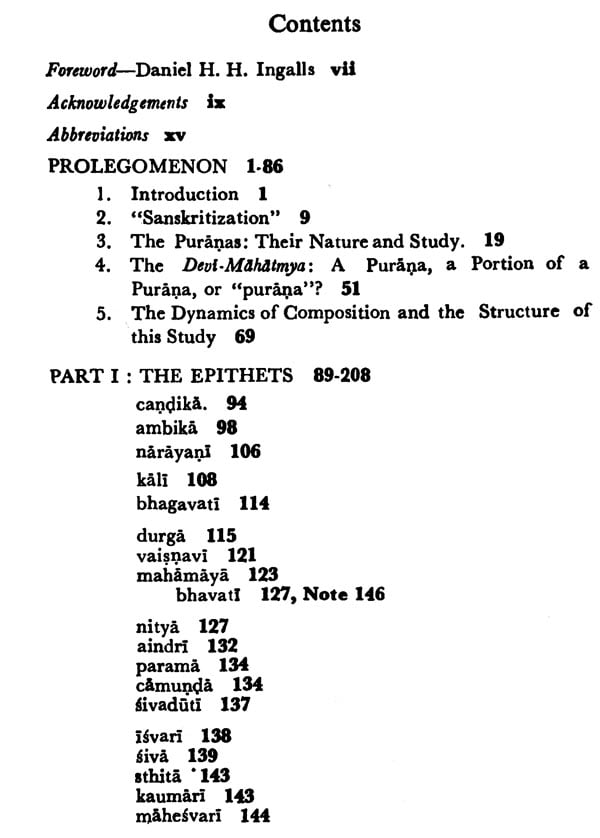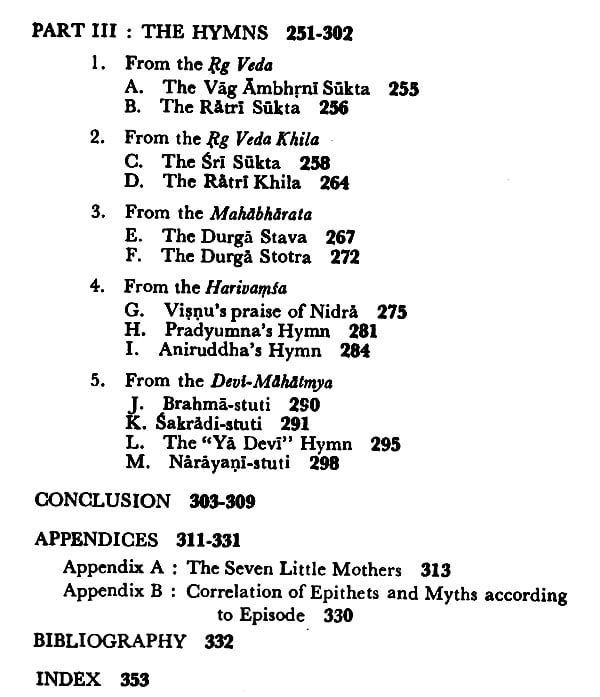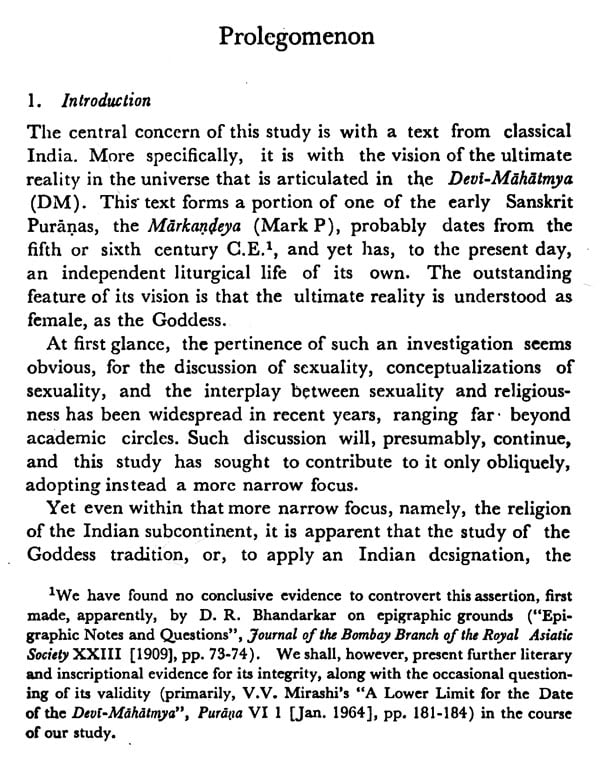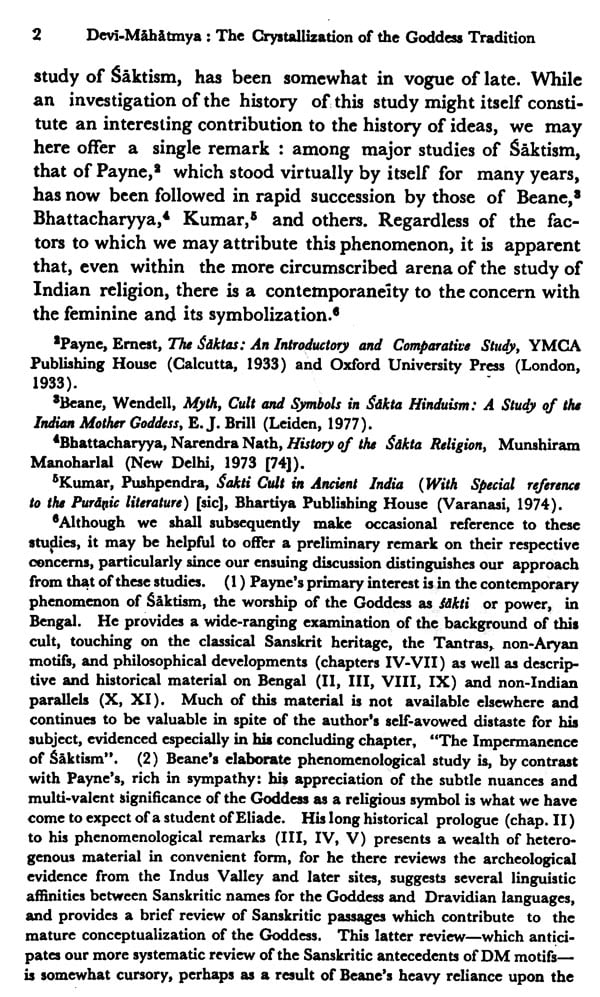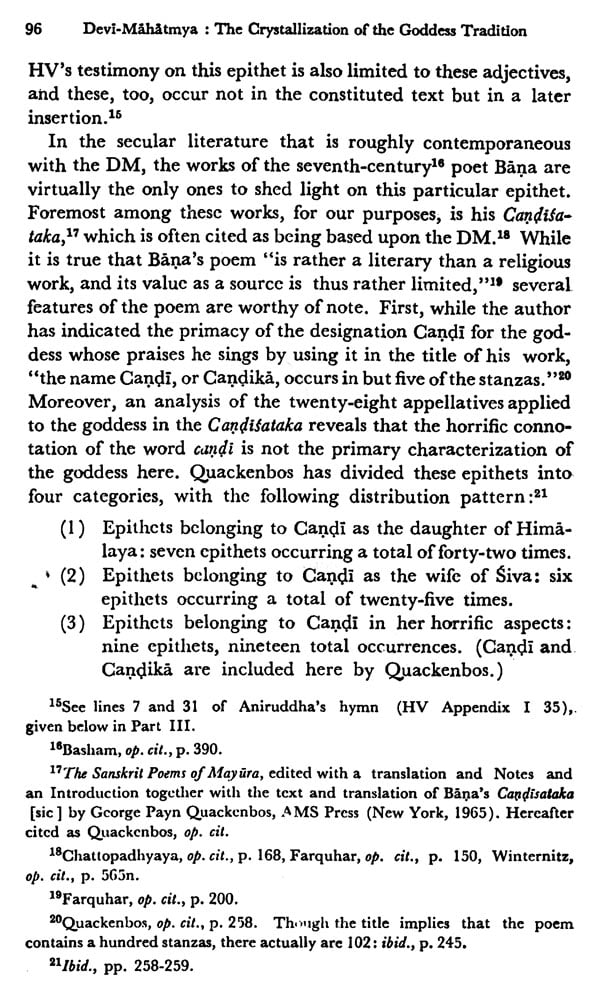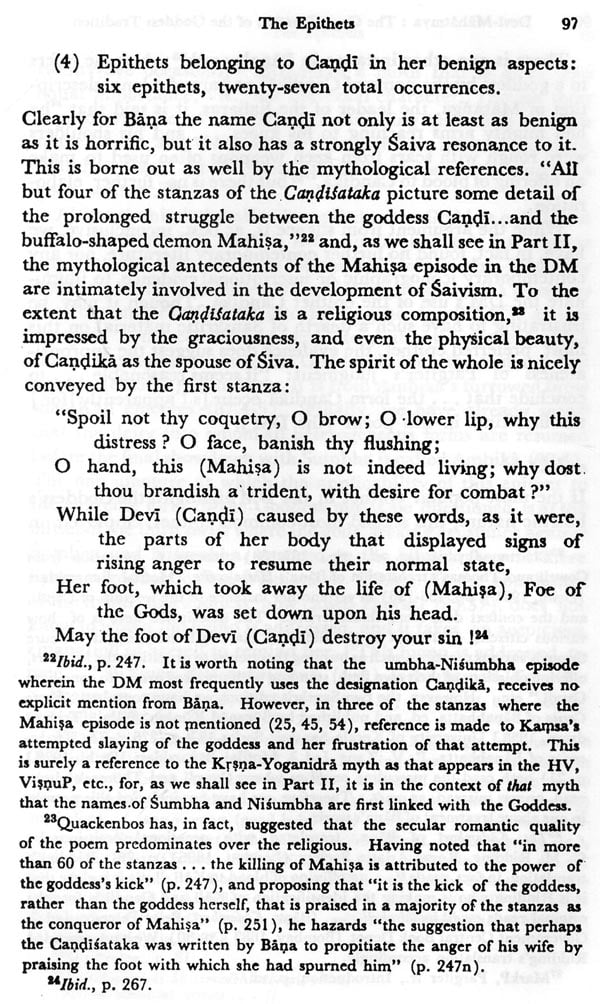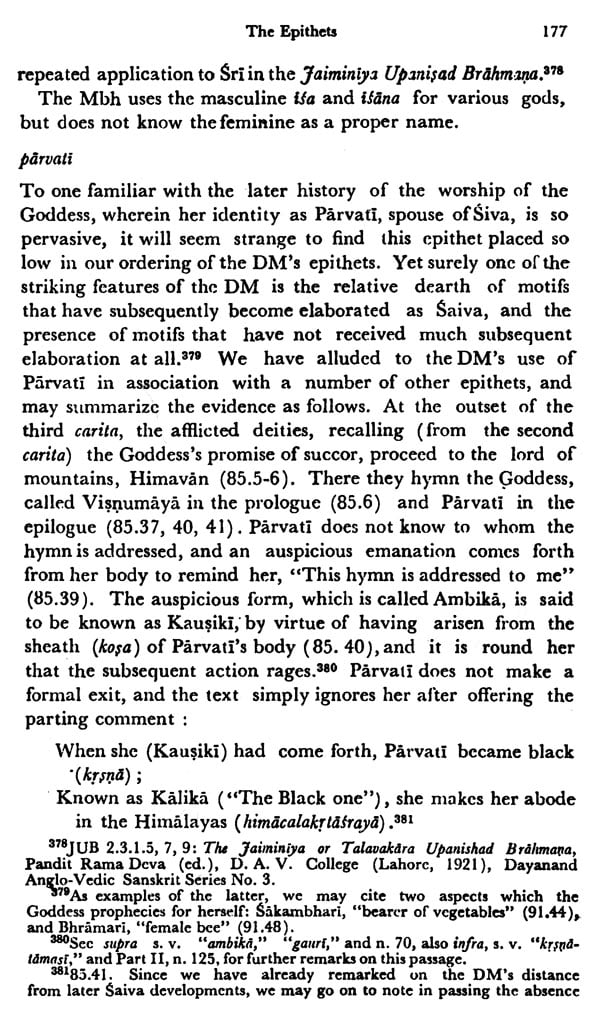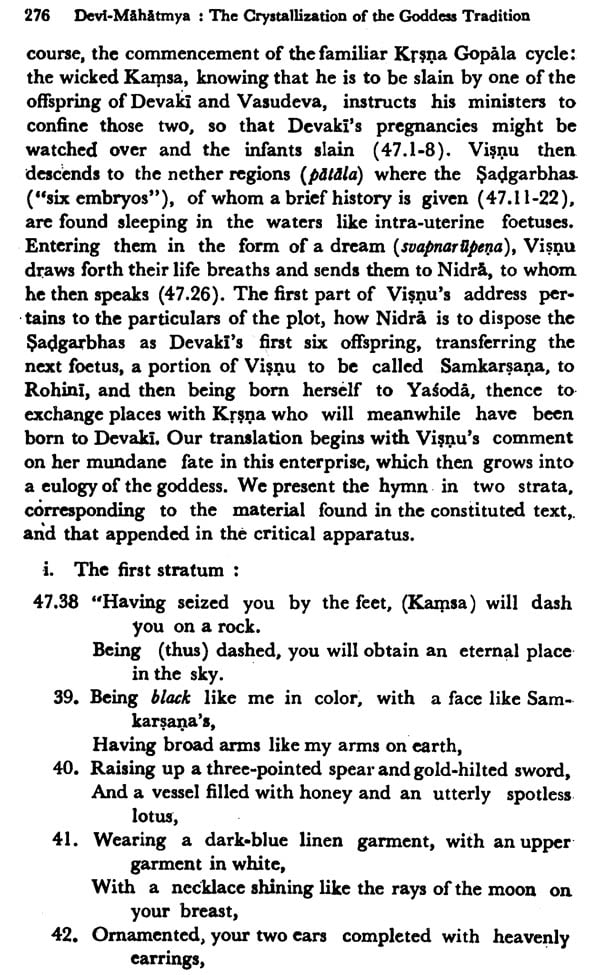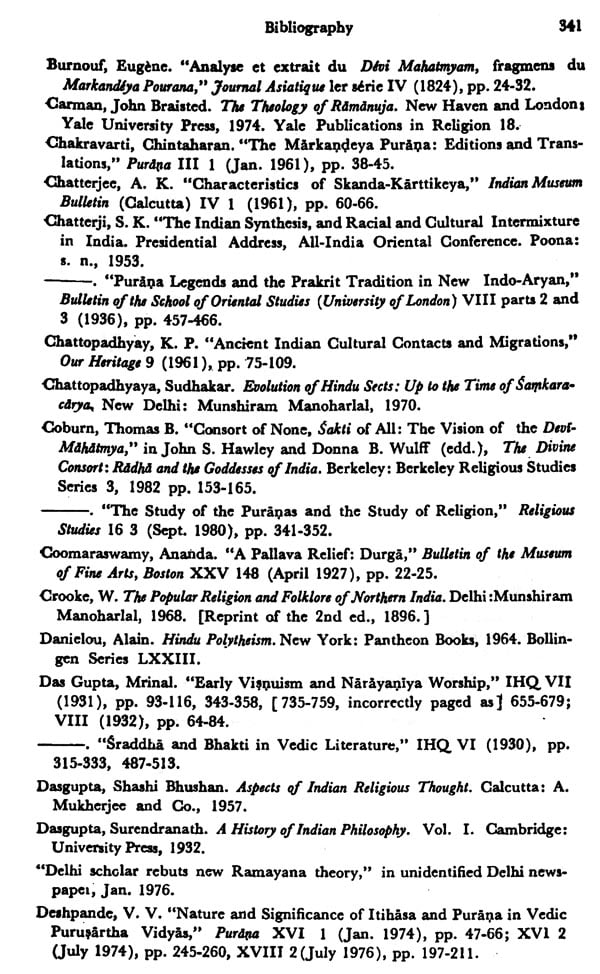
Devi Mahatmya (The Crystallization of The Goddess Tradition)
Book Specification
| Item Code: | NAT941 |
| Author: | Thomas B. Coburn |
| Publisher: | MOTILAL BANARSIDASS PUBLISHERS PVT. LTD. |
| Language: | ENGLISH |
| Edition: | 1997 |
| ISBN: | 9788120805576 |
| Pages: | 360 |
| Cover: | HARDCOVER |
| Other Details | 9.00 X 6.00 inch |
| Weight | 570 gm |
Book Description
The Devi-Mitheitmya is well-known to both devotees and scholars of the Indian Great Goddess. Composed some 1500 years ago, it is the first comprehensive account of the Goddess in Sanskrit, and it has maintained its centrality in the Goddess (Sakta) tradition to the present day. Like so much in that tradition, however, the text has until now resisted careful study from an historical perspective. It is this study that the present volume accomplishes.
The central task here is to explore how an anonymous Sanskrit text articulates a view of ultimate reality as feminine when there is virtually no precedent in the Sanskrit tradition for such a view. To accomplish this task, an appropriate method of scriptural analysis is developed. This involves an examination of Hindu understanding of the Puranas in general, and of the Devi-Melhatmya in particular, along with consideration of several recent scholarly discussions, in India and elsewhere. Subsequently, a comprehensive inquiry into the Goddess's epithets in this text is undertaken, followed by examination of the earlier history of the ~myths that the Devi-Mdhatmya associates with her. The study culminates in translations of the text's hymns, which are annotated so as to indicate the synthesis that is here being accomplished. The resulting illumination of Sanskritized form of Goddess worship is what Daniel H. H. Ingalls calls in his Foreword "anotable scholarly achievement."
THOMAS B. COBURN is the Charles A. Dana Professor of Religious Studies has many academic works to his credit. In addition to Devi Mahatmya, he is the author of Encountering the Goddess: A Translation of the Devi Mahatmya and A Study of its Interpretation, as well as numerous articles on Indian and comparative topics.
Among the most puzzling questions in the study of Indian religion is that concerning the historical background of the Goddess. It is true of course that we can pursue no religion to its ultimate source, for the source of religion must be as old as the origin of man and the first men did not write books or leave archaeological records. But the history, let us say, of Visnu worship, or Siva worship, has been traced back through a series of texts to the oldest religious work of India, the Rigveda. The religion of Devi, on the other hand, while there is circum-stantial evidence for supposing it to be equally old, has scarcely been traced textually back of the fifth century A.D.
This discrepancy has often been remarked on by scholars, both Indian and Western, who have generally agreed in their explanation. The worship of Devi, they say, or Amba or Uma or Parvati, Gauri, Kali, Durga-for she has as many names as her male counterparts-is a cultural gift from pre-Aryan India. Our oldest written texts, on the other hand, come from the Aryan invaders. The Aryans, to judge from the Vedic literature, directed their worship almost solely to male divinities. The dawn-goddess Usas, or such sacrificial abstractions as iia or Bharati, occupy a very subordinate position in the overall picture of Vedic religion. It is only after the two cultures, Aryan and non-Aryan, had intermingled that the Goddess becomes textually prominent, however prominent she may have been in popular, pre-literate culture before that time.
The explanation is sound enough, I dare say, so far as I have stated it. But it has sometimes served as a basis for inferences and judgments that are false. One must not identify the religion of Devi as it is found in modern India, or even as it is found in the vulgate text or the Mahabharata, with non-Aryan India. The cultural intermingling that took place in India must have transformed the nature of pre-Aryan religion. The Devi that we find in her famous Mahatmya is enriched with all sorts of Vedic concepts and notions. She is no more identifiable with one half of the Indian community than is Visnu or Siva with the other. In all three cases borrowings and super-impositions have altered the older monoethnical character. Professor Coburn's book sheds much light on this process of adaptation and growth. He has sought out the earliest occurrence of virtually every epithet and myth attributed to the Goddess in the famous Devimahatmya, the earliest literary work in which the character of the Goddess as she is still conceived and still worshipped stands fully revealed. How many of these epithets are drawn from India's Vedic heritage, how many of these myths are shared with other figures of the epic pantheon, will come as a surprise, I think, to most readers, as it did to me.
Our curiosity concerning Devi will probably never be satisfied by a textual account of Goddess worship in India from the period before the Christian era. Even if the Indus Valley seals are someday translated, in a translation that two people can agree on, how much would these brief inscriptions be likely to tell us ? Meanwhile we may be thankful to Professor 'Coburn. To many corners of the Devi tradition he brings light for the first time. By the use of a carefully developed method of scriptural analysis he permits us to see in an earlier form many traits of the culturally composite Goddess who has been worshipped in India for the past millenium and a half. Her character begins to take on a historical dimension which has hitherto been reserved in India to the great masculine gods. This illumination is a notable scholarly achievement.
**Contents and Sample Pages**
